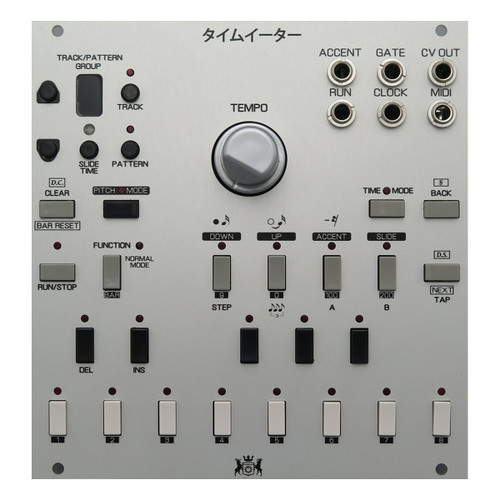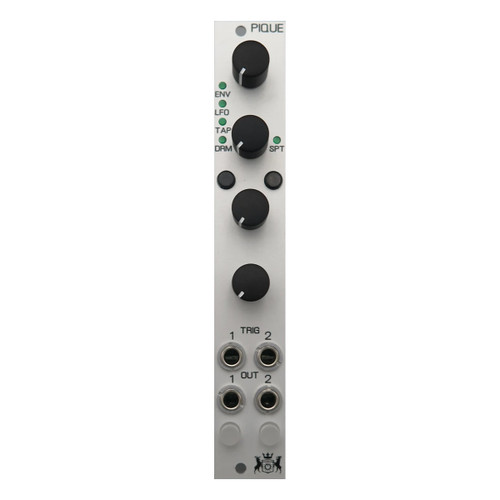We say...
An 8HP redesign of the long-discontinued Mutable Instruments Rings. A bona-fide Eurorack classic!
Original Mutable Instruments description
Three resonator models
- Modal resonator, as used in Elements.
- Sympathetic strings, modelled by a network of comb filters.
- String with non-linearity/dispersion (comb filter with multimode filter and non-linearities in the loop).
All resonator models can be used polyphonically, with 1, 2 or 4 polyphony voices.
Voltage-controlled resonator
Each model provides a unified set of parameters, all voltage controlled, with an attenuverter:
- Structure. With the modal and non-linear string models, controls the inharmonicity of the spectrum (which directly impacts the perceived "material"). With the sympathetic strings model, controls the intervals between strings.
- Brightness. Specifies the brightness and richness of the spectrum.
- Damping. Controls the damping rate of the sound, from 100ms to 10s.
- Position. Specifies at which point the structure is excited.
Easy to patch
- Audio input accepting modular level signals, up to 16 Vpp.
- Two audio outputs, either splitting odd/even partials in monophonic mode, or even/odd notes in polyphonic mode.
- Voltage change detector on the V/O input, allocating a new polyphony voice each time a different note is played.
- Internal exciter triggered by the STRUM input (filtered pulse or noise burst), allowing the module to be used without an external excitation source.
- Width: 8HP
- Current: +12V 120mA / -12V 5mA
Product Overview
We say...
An 8HP redesign of the long-discontinued Mutable Instruments Rings. A bona-fide Eurorack classic!
Original Mutable Instruments description
Three resonator models
- Modal resonator, as used in Elements.
- Sympathetic strings, modelled by a network of comb filters.
- String with non-linearity/dispersion (comb filter with multimode filter and non-linearities in the loop).
All resonator models can be used polyphonically, with 1, 2 or 4 polyphony voices.
Voltage-controlled resonator
Each model provides a unified set of parameters, all voltage controlled, with an attenuverter:
- Structure. With the modal and non-linear string models, controls the inharmonicity of the spectrum (which directly impacts the perceived "material"). With the sympathetic strings model, controls the intervals between strings.
- Brightness. Specifies the brightness and richness of the spectrum.
- Damping. Controls the damping rate of the sound, from 100ms to 10s.
- Position. Specifies at which point the structure is excited.
Easy to patch
- Audio input accepting modular level signals, up to 16 Vpp.
- Two audio outputs, either splitting odd/even partials in monophonic mode, or even/odd notes in polyphonic mode.
- Voltage change detector on the V/O input, allocating a new polyphony voice each time a different note is played.
- Internal exciter triggered by the STRUM input (filtered pulse or noise burst), allowing the module to be used without an external excitation source.






